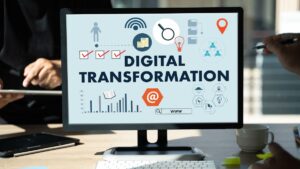The Future of Revenue Streams: Trends and Predictions

How-will-your-company-respond-to-the-proposed-changes-in-revenue-recognition
The landscape of revenue generation is evolving rapidly as businesses adapt to technological advancements, shifting consumer preferences, and emerging market trends. Understanding the future of revenue streams is crucial for companies looking to stay ahead of the curve and capitalize on new opportunities. This blog explores the key trends and predictions shaping the future of revenue streams and provides insights into how businesses can prepare for the changes ahead.
1. The Rise of Subscription-Based Models
A. The Growing Popularity:
Subscription-based revenue models have gained significant traction across various industries, from media and entertainment to SaaS and e-commerce. Consumers appreciate the convenience and flexibility of subscription services, while businesses benefit from predictable, recurring revenue.
B. Key Trends:
- Personalization: Subscription services are increasingly offering tailored experiences based on customer preferences and usage patterns. Personalized content, recommendations, and pricing are becoming standard.
- Tiered Pricing: Companies are adopting tiered subscription plans to cater to different customer needs and maximize revenue. Multiple pricing tiers offer varying levels of access and features.
- Hybrid Models: Businesses are combining subscription models with other revenue streams, such as one-time purchases or freemium options, to attract a broader audience and increase revenue potential.
C. Future Implications:
As subscription models continue to evolve, companies will need to innovate and offer more value to retain customers. Building strong customer relationships and providing exceptional service will be essential for sustaining growth in the subscription economy.
2. The Emergence of Digital Payments and Cryptocurrencies
A. Digital Payment Growth:
Digital payments are becoming the norm, with consumers increasingly using mobile wallets, contactless payments, and online payment platforms. The convenience and security of digital payments are driving widespread adoption.
B. Cryptocurrencies and Blockchain:
Cryptocurrencies, such as Bitcoin and Ethereum, are gaining traction as alternative payment methods. Blockchain technology is also revolutionizing financial transactions by providing secure, transparent, and decentralized solutions.
C. Key Trends:
- Integration with Traditional Systems: Businesses are integrating digital payment solutions with traditional banking systems to streamline transactions and enhance customer experiences.
- Stablecoins: Stablecoins, which are pegged to traditional currencies, are gaining popularity as a more stable alternative to volatile cryptocurrencies.
- Regulatory Developments: Governments and regulatory bodies are increasingly focusing on cryptocurrency regulations to ensure security and compliance.
D. Future Implications:
The adoption of digital payments and cryptocurrencies will continue to grow, presenting opportunities for businesses to reach new markets and offer innovative payment options. Staying informed about regulatory changes and technological advancements will be crucial for success in this evolving landscape.
3. The Expansion of E-Commerce and Direct-to-Consumer (DTC) Models
A. E-Commerce Boom:
E-commerce has seen exponential growth, driven by changing consumer habits and technological advancements. Online shopping offers convenience, variety, and competitive pricing, making it a preferred choice for many consumers.
B. DTC Models:
Direct-to-consumer (DTC) models are gaining popularity as brands seek to establish direct relationships with customers and capture higher profit margins. DTC brands can control their messaging, pricing, and customer experience more effectively.
C. Key Trends:
- Omnichannel Strategies: Companies are integrating online and offline channels to provide a seamless shopping experience. Omnichannel approaches include click-and-collect, virtual try-ons, and personalized online interactions.
- Social Commerce: Social media platforms are increasingly incorporating e-commerce features, allowing businesses to sell products directly through social channels.
- AI and Automation: Artificial intelligence and automation are being used to enhance e-commerce operations, from personalized recommendations to inventory management.
D. Future Implications:
The growth of e-commerce and DTC models will continue to reshape retail and consumer behavior. Businesses will need to invest in technology, customer experience, and logistics to stay competitive and meet evolving customer expectations.
4. The Shift Towards Experience-Based Revenue Models
A. Experience Economy:
Consumers are increasingly valuing experiences over material possessions, leading to the rise of experience-based revenue models. Businesses are focusing on creating memorable experiences to attract and retain customers.
B. Key Trends:
- Subscription Experiences: Companies are offering subscription-based experiences, such as monthly boxes of curated products or exclusive event access, to provide ongoing value and engagement.
- Experience Personalization: Businesses are leveraging data and technology to personalize experiences, from customized travel itineraries to tailored entertainment options.
- Experiential Marketing: Brands are using experiential marketing techniques to create immersive and interactive experiences that resonate with consumers.
C. Future Implications:
As the experience economy continues to grow, businesses will need to innovate and deliver exceptional experiences to differentiate themselves. Investing in customer insights, technology, and creative strategies will be essential for success in this space.
5. The Impact of Artificial Intelligence and Automation
A. AI-Driven Revenue Models:
Artificial intelligence (AI) and automation are transforming revenue generation by enabling businesses to optimize operations, enhance decision-making, and create new revenue opportunities.
B. Key Trends:
- Predictive Analytics: AI-powered predictive analytics helps businesses forecast demand, identify trends, and make data-driven decisions to drive revenue growth.
- Chatbots and Virtual Assistants: AI-driven chatbots and virtual assistants are improving customer service and support, leading to increased customer satisfaction and retention.
- Automated Marketing: Marketing automation tools are streamlining campaign management, lead generation, and customer engagement, resulting in more efficient and effective revenue generation.
C. Future Implications:
The integration of AI and automation will continue to drive innovation and efficiency in revenue generation. Businesses will need to embrace these technologies to stay competitive and capitalize on new opportunities.
Conclusion
The future of revenue streams is shaped by a dynamic interplay of technological advancements, evolving consumer preferences, and emerging market trends. From subscription models and digital payments to e-commerce and experience-based revenue, businesses must stay agile and adapt to these changes to drive growth and success. By leveraging data, embracing innovation, and prioritizing customer experience, companies can navigate the future of revenue streams and thrive in a rapidly changing landscape.







